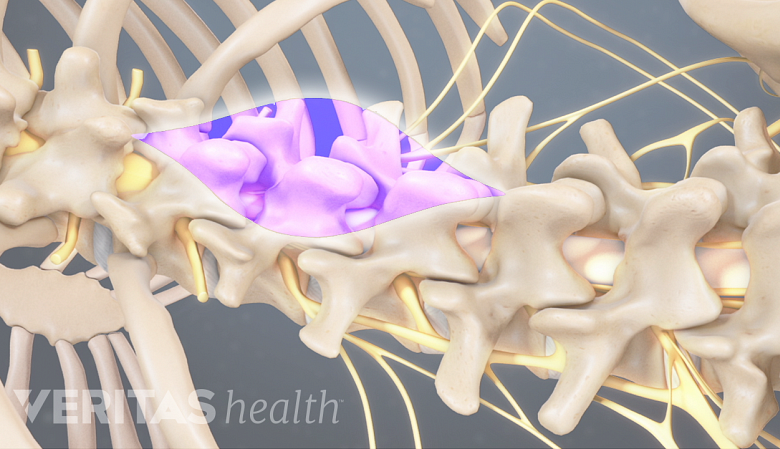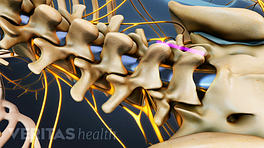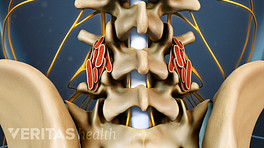Transforaminal lumbar endoscopic interbody fusion is a minimally invasive spinal fusion technique. The surgeon approaches the surgical area from the side of the spine using specialized minimally invasive instruments.
The goal of an ETDIF is the same as with any other type of fusion: to stabilize the spinal segment and eliminate micromotion that can cause the inflammation and pain. Conditions such as a lumbar herniated disc and/or degenerative disc disease may be treated with this type of lumbar fusion surgery.
In This Article:
- Endoscopic Transforaminal Decompression Interbody Fusion (ETDIF)
- Endoscopic Transforaminal Decompression Interbody Fusion: Step-by-Step
- ETDIF Risks and Complications
- Postoperative Care after ETDIF
What Is an Endoscopic ETDIF?
An endoscopic ETDIF is similar to an open ETDIF surgery, but includes the use of a minimally invasive approach with a tiny camera (the endoscope) that sends images to a monitor.
An endoscopic approach involves tube(s) inserted into the operative area using relatively small incisions, with a camera to provide visibility to the surgeon and small instruments inserted through the tube(s) to conduct the operation.
Goals of Minimally Invasive ETDIF
Open surgeries have a larger incision compared to minimally invasive ETDIF surgeries.
The objectives for this type of minimally invasive spine surgery, vs. traditional open ETDIF surgery, include: 1 Yang Y, Liu B, Rong LM, et al. Microendoscopy-assisted minimally invasive transforaminal lumbar interbody fusion for lumbar degenerative disease: short-term and medium-term outcomes. Int J Clin Exp Med. 2015;8(11):21319-26.
- Shorter anesthetic time
- Minimal blood loss
- Less surgical trauma
- Shorter recuperation with less postoperative pain/need for pain medications
- Quicker Postoperative Care for Spinal Fusion Surgery and early return to productive life.
Types of ETDIF
As with many surgeries, there are a number of options to achieve a minimally invasive ETDIF. Here are two approaches:
ETDIF
This type of minimally invasive approach uses an endoscope (tubes) with the diameter of a typical pencil.
The incision is just large enough for the endoscope to go through—so it is termed a keyhole incision or percutaneous incision. All instruments used in the surgery pass through the tubes, so there are no open incisions, and no muscle cutting or stripping; instead, the tube goes through the muscles and soft tissues.
Endoscopic-assisted ETDIF
This type of approach is very similar to the above-described percutaneous, or ETDIF, but with an endoscopic-assisted ETDIF the incisions are marginally larger (e.g. about 3/4 inch).
The endoscope is inserted through the small incisions in order to improve visualization of the operative area for the surgeon. This technique may be called an endoscopic-assisted ETDIF. It is much less invasive than an open ETDIF surgery, but not as minimally invasive as the above-described approach.
The type of approach is commonly based on the individual surgeon's experience and preferences, as well as the patient's unique condition.
- 1 Yang Y, Liu B, Rong LM, et al. Microendoscopy-assisted minimally invasive transforaminal lumbar interbody fusion for lumbar degenerative disease: short-term and medium-term outcomes. Int J Clin Exp Med. 2015;8(11):21319-26.








